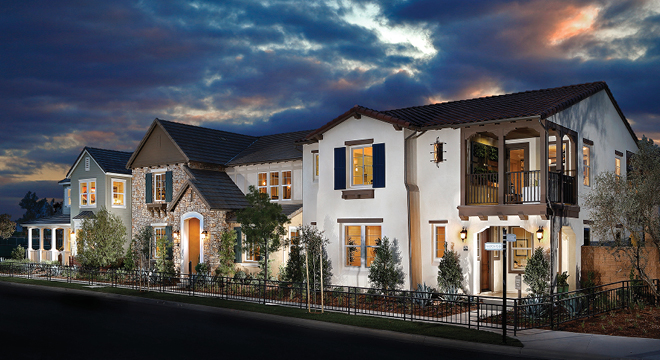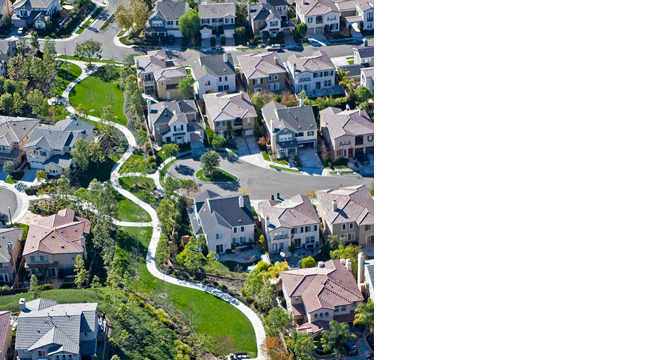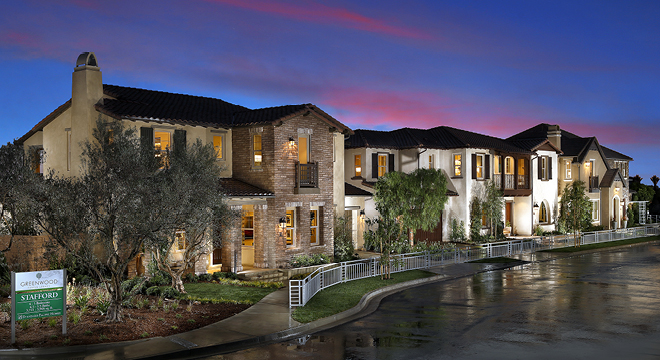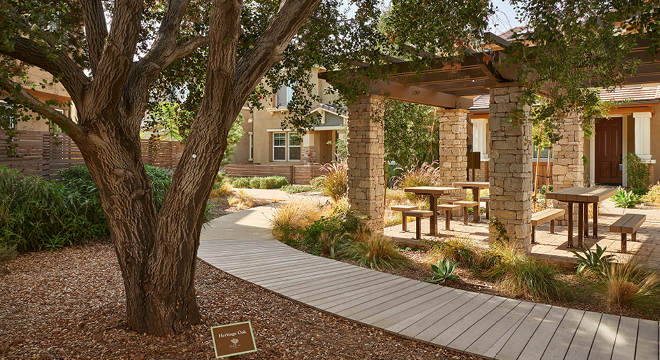Great Neighborhoods – A Recipe
As planners and architects working on macro- and micro-scale communities, we are often asked, “What makes a Great Neighborhood?” It’s not an easy question with a singular, analytical answer. It’s a question of physical and emotional dimensions that evokes our personal experience and preferences.
Our first and foremost response is “How do you define a neighborhood?” Is it the block length to borrow a cup of sugar or the area within a short walk to the local park or school? Is it an urban block or a suburban block? Is it population-based? (In which case, density has everything to do with it!) However a neighborhood is defined, there are a few essential ingredients needed to create a great one.

Crawford at Greenwood, Tustin, CA | Photo by Anthony Gomez
Walkability
Walkable neighborhoods allow residents to easily travel to the neighbors’ homes, parks, schools and retail/services. A walk score is a metric used to determine whether a neighborhood is pedestrian or vehicular oriented. Check out the interesting www.walkscore.com.
Great Streets
Streets are the critical links that connect and define neighborhoods. While we like to think our neighborhoods are only about our homes, we are linked and bounded by its travel-ways. Even with the evolving role of cars, it’s critical to provide streets, sidewalks and landscape that create inviting, attractive and safe spaces. Below are other benchmarks we use for street design:
– Shorter block lengths (350′ to 500′)
– Street trees for shade, aesthetics and shelters for animals
– Sidewalks at least 5′ wide
– On-street parking that works
– “Kissing” cul-de-sacs that allow pedestrian access within communities

Diversity of Housing
A mix of housing styles and densities creates vibrancy and variety within the neighborhood. Below are some ways that can be achieved:
– Conventional homes with less emphasis on garages and driveways
– Alley-loaded homes featuring front doors without garage doors and driveways along the street
– Varied massing of homes, fencing, and landscape
– A mix of 1-, 2- and 3-story homes/buildings

Stafford at Greenwood, Tustin, CA | Photo by Anthony Gomez
Privacy
Incorporate privacy for outdoor spaces by strategic window placements and yard orientation.
Interconnectivity
Provide multi-modal transportation access to trails, pathways and sidewalks to enhance walkability.
Unique Spaces
Some of the most memorable spaces are the un-planned or inconsequential remnants of urban space. These special places in neighborhoods evolve over time and help define communities.
Great neighborhoods generate feelings of pride, belonging, security and energy that “feels right” and appeals to all. Undoubtedly, these ingredients will be part of their success story!

Oakgrove Walk, La Verne, CA, Photo by Creative Noodle





Leave a Reply